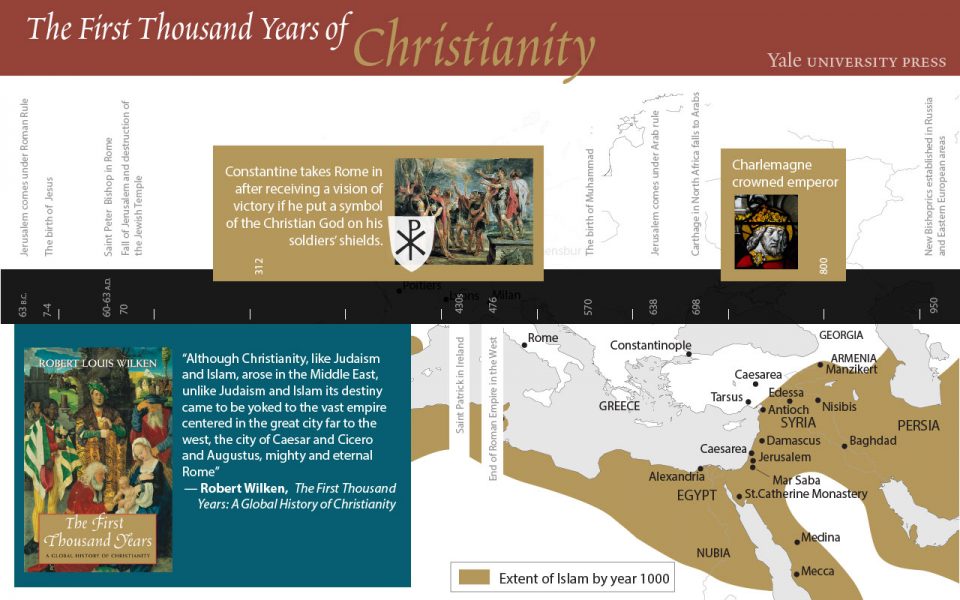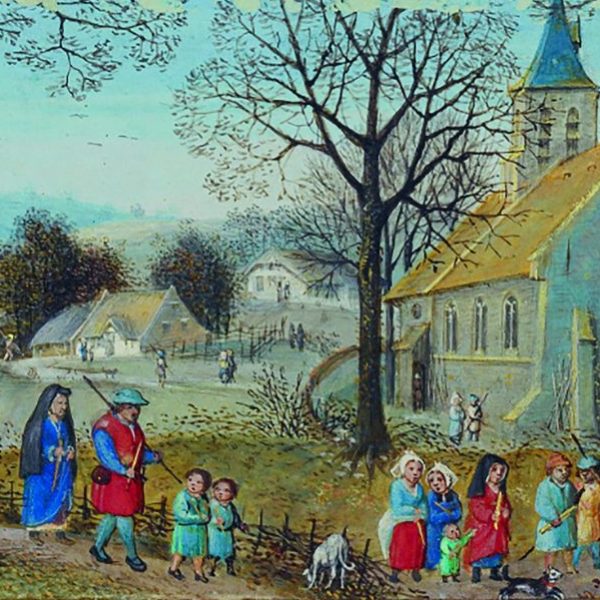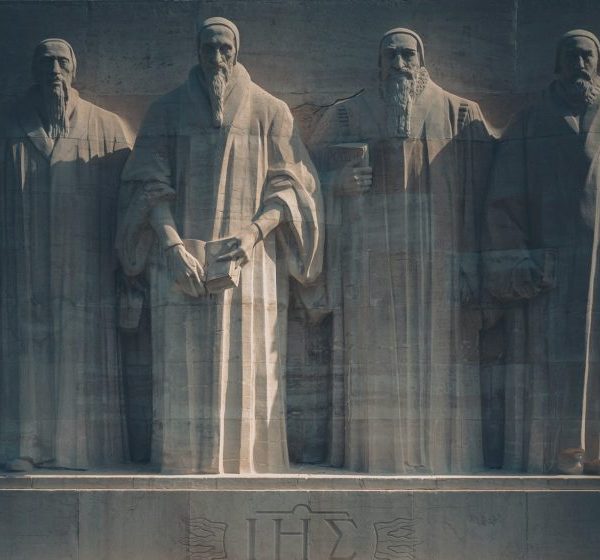In the First Thousand Years of Christianity…
As the Romans conquered vast territories in the first century BCE, they brought disparate parts of the world under one political rule. Their strategy for maintaining these sprawling territories left room for relative cultural, linguistic and religious diversity, so long as it did not threaten Roman authority. Ideas and technology spread with people travelling more freely between distant regions. This is the context in which Robert Louis Wilken’s begins his history of Christianity, The First Thousand Years. Over the next millennium the Christian religion would take root and spread in every direction, but we start in Palestine under Roman authority with the birth of a Jew named Jesus.
The Roman context for the beginnings of the religion will prove crucial in Wilken’s account. In The First Thousand Years, Wilken emphasizes how Christianity is a “culture-forming religion,” and the Roman Empire’s structure allowed for the religion spread across cultures within the empire.
 Wilken’s prose deftly sweeps through many pertinent historical elements that contributed to Christianity’s scope and shape. He has an immense amount of material to cover, not only theologically, but geographically: from the religion’s Middle Eastern origins to the conversion of Prince Vladimir in Kiev. By the year 1000, Christianity was a global religion.
Wilken’s prose deftly sweeps through many pertinent historical elements that contributed to Christianity’s scope and shape. He has an immense amount of material to cover, not only theologically, but geographically: from the religion’s Middle Eastern origins to the conversion of Prince Vladimir in Kiev. By the year 1000, Christianity was a global religion.
Over time, Christianity developed its own internal ecclesial structures in tandem with its theology. In his section on canon law, Wilken notes how religious law creates a way of being in the world distinct from outside laws, forming a society within a society. “Christians thought of themselves as part of a visible society,” he writes, “a parallel sovereignty, a corporate body in its own right with a distinctive way of life, rituals, institutions, norms of behavior and the like.”
As Christianity formed its own identity, it shaped the cultures it touched. This influence worked in both directions. Wilken’s insights on interactions between Islam and Christianity are particularly fascinating as he illuminates the way this intersection shaped the self-understandings of both religions. We see this dialogue in coins minted by 8th century Muslim rulers with the phrase: “THERE IS NO GOD BUT GOD ALONE. HE HAS NO COMPANION” as a message to Christians.
As we find through Wilken’s diverse examples, in its first thousand years Christian history does not develop as a steady story of conversions. “Set against the success of Islam and its staying power,” he writes, “the career of Christianity is marked as much by decline and attrition as it is by growth and triumph.” Its progress is tied to the rising and falling of political allies, technological developments and wars, won and lost. Wilken leaves us with a picture of a society-making religion inextricably tied to pre-existing cultural structures. “Christianity came into the world as an ordered community and made its way as a corporate body with institutions and offices, rituals and laws,” says Wilken. “Christianity is inescapably social.”





